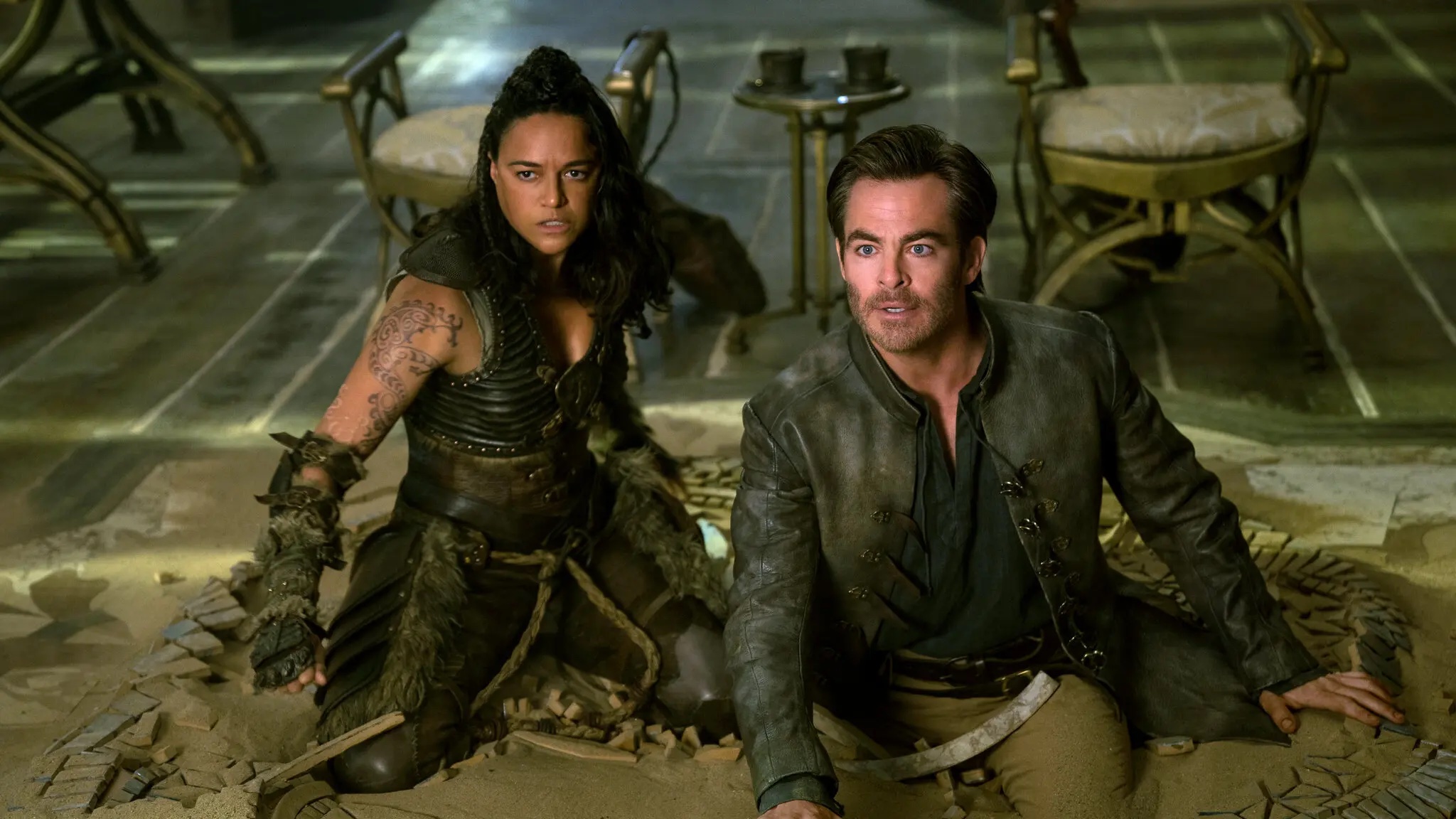Although Dungeons and Dragons started as a world of pretend, it’s taken on a life of its own. From helping fuel the satanic panic in the ’80s to being referenced in cult classic shows such as Freaks & Geeks, the tabletop game has long been a pop culture icon. More recently, the game has been thrust back into the mainstream through web series like Critical Role and the Netflix hit show Stranger Things. So it was no surprise that a film inspired by the game was recently released, and that the many fans of D&D prepared to rush to the theaters.
And the movie did not disappoint. Dungeons & Dragons: Honor Amongst Thieves is a hilarious fantasy heist movie that satisfies both lifelong D&D fans and those who know nothing about the game.
Fast-paced and witty, the film incorporates action into the campaign structure of Dungeons and Dragons. It adopts the general rules, references innumerable classic game elements, and uses them to shape the plot. Seasoned players can relate to the scene in which a “Speak with Dead” spell goes comically awry due to poor phrasing, and will understand the satisfaction of a well-placed “Counterspell” in a fight scene. Likewise, there are plenty of core campaign plot staples to be found, such as a good-old-fashioned dungeon crawl. This reviewer thoroughly enjoyed counting all the easter eggs.
On the other hand, like a real campaign, the “rule of cool” is prized above the handbook, so not all aspects are one hundred percent true to their source material; there’s no counting of spell slots or adherence to long rests, bards have no magic, and druids can seemingly endlessly wild shape. These creative liberties are an asset, because they allow the film to play in the D&D sandbox without slowing the plot or breaking the fantasy—audiences are also saved the trouble of suffering through a rules-accurate fight scene. Like any good game of Dungeons and Dragons, it prioritizes entertainment and storytelling over being a stickler. This creates an effective mix of specificity that appeals to long-time fans and a smooth experience that is accessible to beginners.
The film follows Edgin (Chris Pine), a Bard who became a thief after the death of his wife. After a robbery gone wrong, Edgin and his Barbarian companion Holga (Michelle Rodriguez) find themselves in prison, leaving Edgin’s daughter Kira (Chloe Coleman) with their friend Forge (Hugh Grant). Two years into their sentence, Edgin and Holga escape and set off to find Forge; but what they discover is that he has turned Kira against Edgin. Edgin and Holga must pair up with Simon (Justice Smith), a mildly inept Sorcerer, and Doric (Sophia Lillis), a distrustful Tiefling Druid, to retrieve Kira and find the relic Edgin had been attempting to steal when he was sent to prison.
Though films with stacked casts can often fall short of expectations, the big names in this one lived up to their reputations. Hugh Grant, who at first seemed unexpected for the role, put his all into the role, bringing his unique humor to his generally basic character. For his part, Chris Pine had amazing chemistry with all members of his party. The casting of very many “up-and-coming” actors such as Sophia Lillis and Regé-Jean Page also felt intentional rather than a grab on their more recent popularity. They did not shrink behind their more famous screen partners and were quite well suited for their roles, making any accusation that they were just being used for their names quite impossible. Page’s casting as a Paladin—a chivalrous knight known for their commitment to justice—was especially perfect given that he’s best known for his role as the staid, gallant Duke of Hastings on the Netflix series Bridgerton.
For the inexperienced watchers, Dungeons & Dragons does a very good job at setting up the world in which it takes place. The narrated flashback at the beginning of the movie helps situate the audience in a humorous and plot-appropriate way; but what really builds the world for the viewer are the panoramic scenes of the fantasy landscape. The characters pass through quaint, lush towns, icy expanses, volcanic wastes, and lavish cities which set up the expectation of endless possibilities.
Because these scenes don’t fully explain the world, they’re supplemented with expositional dialogue, making some of the characters’ interactions sound awkward and rehearsed. Doric’s monologue about deforestation and discrimination under Forge’s regime felt out of place and robotic. The discomfort from these clunky explanations, however, is quickly offset by hilarious exchanges. Filled with one-liners, roasts, expert timing, and artful pauses, the movie leaves the audience slapping their knees and forgetting any moments of puzzlement. A particular scene that stands out is Bradley Cooper’s (CAS ’97) unexplained and uncredited cameo.
D&D has come a long way from the days of satanic panic and social ostracization. More people than ever are playing, and the mainstream is finally realizing its creative and entertainment potential. D&D is built on points and rolling dice, but it’s beloved because of the stories we tell around a table with our friends. This film is a love letter to decades of these shared stories, their creators, and the joy of not taking ourselves too seriously.





